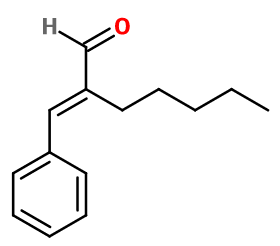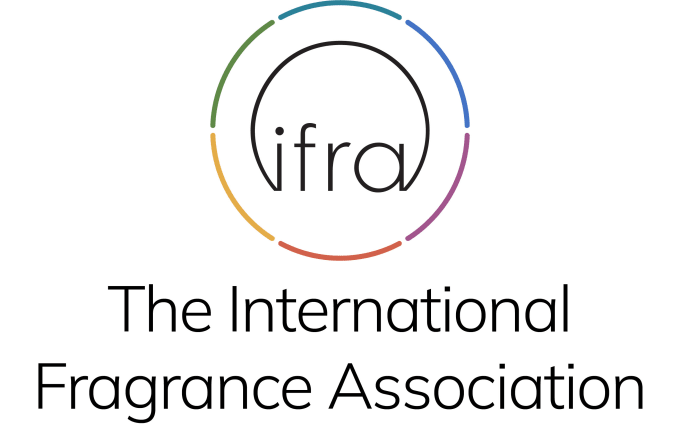
Photo credits: ScenTree SAS
Jasmonal A®
Amyl Cinnamaldehyde ; Amyl Cinnamaldehyde ; 2-benzylideneheptanal ; Amyl cinnamal ; Amylcinnamaldehyde ; Amylcinnamal ; 2-benzylidene heptanal ; Buxine ; Flomine ; Flosal ; Floxine ; 2-(phenylmethylene)-heptanal ; Jasmin aldehyde ; Jasminal ; Jasminaldehyde ; Jasmona ; Jasmine aldehyde ; 2-pentyl cinnamaldehyde

Photo credits: ScenTree SAS
Do you sell any of the raw materials? Would you like to let our users know?
Send an email to fournisseurs@scentree.coto learn about our advertising opportunities.
Do you sell any of the raw materials? Would you like to let our users know?
Send an email to fournisseurs@scentree.coto learn about our advertising opportunities.
General Presentation
-
CAS N° : 122-40-7
-
EINECS number : 204-541-5
-
FEMA number : 2061
-
FLAVIS number : 05.040
-
JECFA number : 685
-
Appearance : Colorless liquid
-
Density : 0,967
-
Volatility : Heart/Base
-
Price Range : €€
Physico-chemical properties
-
Molecular formula : C14H18O
-
Molecular Weight : 202,3 g/mol
-
Log P : 4,7
-
Fusion Point : <0°C
-
Boiling Point : 289°C
-
Detection Threshold : Donnée indisponible.
-
Optical rotation : Donnée indisponible
-
Vapor pressure : Donnée indisponible
-
Refractive Index @20°C : Donnée indisponible
-
Acid Value : Donnée indisponible.
-
Flash Point : 94°C
Uses
Uses in perfumery :
Jasmonal A® is useful for light floral accords such as spring and white flowers : jasmine, lilac, tuberose or narcissus notes. Also used in fruity notes.
Year of discovery :
1926
Natural availability :
Jasmonal A® is found in trace amounts in some black teas. However, it is synthetic Jasmonal A® that is most often used in perfumery.
Isomerism :
Jasmonal A® has a double bond that gives rise to two possible diastereoisomers of the molecule. However, it is the mixture of the two diastereoisomers that is used in perfumery.
Synthesis precursor :
Jasmonal A® is not a precursor to the synthesis of another compound of olfactory interest.
Synthesis route :
As for Cinnamaldehyde, the synthesis of Jasmonal A® is made by a condensation of Benzaldehyde with heptanal (Aldehyde C-7), using an excess of Benzaldehyde and gradually adding the Aldehyde C-7 in order to avoid it self-condensation.
Regulations & IFRA
Allergens :
This ingredient does not contain any allergen.
IFRA 51th :
This ingredient is restricted by the 51th amendment
- Quantitative limit on the use :
-
Cat.1 Cat.2 Cat.3 Cat.4 Cat.5A B C DCat.6 0,58 % 0,53 % 0,26 % 7 % 2,5 % 0,32 % 0,45 % 0,11 %0,064 % Cat.5A B C DCat.6 2,5 % 0,32 % 0,45 % 0,11 %0,064 % Cat.7A BCat.8 Cat.9 Cat.10A BCat.11A BCat.12 0,26 % 0,26 %0,11 % 1,5 % 1,5 % 3,5 %0,11 % 0,11 %No Restriction Cat.10A BCat.11A BCat.12 1,5 % 3,5 %0,11 % 0,11 %No Restriction



